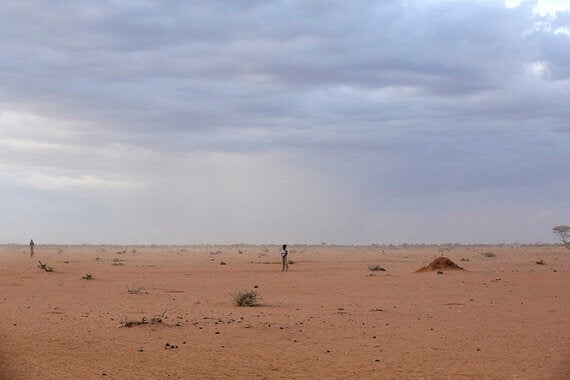
UN Photo/Evan Schneider. Used under licence (creativecommons.org/licenses/by-nc-nd/2.0/legalcode)
In May, ministers in Nairobi announced plans to shut down Dadaab, the sprawling camp that houses some 350,000 Somali refugees in Kenya's remote north-east. The UN erected the first tents there in 1991, as the Somali state collapsed: a quarter-century on, it stands there still - the largest refugee settlement on earth.
It is also among the world's oldest. And in certain ways, Dadaab constitutes something of an anachronism. Only a third of the 65 million people uprooted by conflict globally are refugees: the majority have been made homeless inside their country's borders, not outside them. Sixty percent of today's displaced are in towns and cities, not camps: connections, hopes of work, and fear draw those forced to flee increasingly towards the world's urban, populated areas.
But in almost every other sense - in its longevity, its hopelessness, its stasis - Dadaab represents a terrible indictment of the prevailing international approach to humanitarian crises, as well as the world's failure to bring an end to its most protracted conflicts. Most of those who fled Somalia in the 1990s have no homes to go back to; their children - and their children's children - lack any connection to the country, which anyway remains prohibitively unstable. Kenya, for social, economic and demographic reasons, is unwilling to further formalise the refugees' presence on its territory, and bars the camp's residents from working, or even straying beyond its perimeter. And though the United States resettles a few thousand refugees from Dadaab annually, the total number of Somalis taken in by other countries is negligible.
The tragedy here is not just that successive generations of refugees cannot envision a future for themselves or their families beyond a camp in the desert. It is that the status quo - pure limbo - serves no one. With support from the international community, Kenya could strike a new deal for refugees that would, if properly conceived and executed, serve as model for responding to long-term crises elsewhere.
To begin with, wealthier governments, the UN and NGOs need to demonstrate that they are serious about supporting Kenya in hosting, and ultimately absorbing into its systems, significant numbers of Somali refugees. This does not just mean continuing the basic food and health services that organisations like the International Rescue Committee deliver every day in Dadaab. It means engaging the international financial institutions and private sector and generating a comprehensive development plan for the north-east, to the benefit of refugees and Kenyans alike (acute malnutrition rates are three times greater among the host community around Dadaab than within the camp). It means tearing down the silos that seal emergency humanitarian work and long-term development activities - meaningless distinctions in Dadaab, as they are in so many other protracted settings - off from each other, and establishing collective outcomes for health, education, protection from violence for women and children, and economic well-being, against which progress and performance can be measured. And it means working through a policy for Somali refugees in Kenya that spares them the indignity of future decades of hand-outs, and allows them to become self-sufficient, and to contribute to Kenyan society.
Not all will want or be able to stay. Those for whom Somalia offers viable prospects and a safe future should, if going back is their wish, be supported in doing so. However daunting it may be, international support for improved security in the country is essential if such returns are to be undertaken in safety and in dignity. The vulnerable among the refugee population should be resettled out of Kenya to third countries, including across the European Union: this might, after months of European efforts to prevent asylum-seekers entering its borders, partially restore the bloc's credibility in calling on non-European states to continue sheltering huge numbers of refugees.
Dadaab also presents an opportunity. More than 125 million people around the world are urgently in need of humanitarian assistance. Despite record contributions, the gap between those needs and the resources provided to meet them continues to grow. The case for better aid is therefore as compelling as the case for more aid, and donors and the humanitarian community need to recognise this, by committing to monitoring, generating, sharing and responding to evidence on the impact of different aid approaches, and by establishing common mechanisms to measure the cost-efficiency and cost-effectiveness of specific programmes. Kenya could be the perfect place to pilot these models, and to forge new and innovative ways of delivering aid.
This is the theory. Transforming it into practice is the task of governments, UN agencies, NGOs and others involved in relief and development efforts. The imperative stretches far beyond Dadaab. Most conflicts now burn on for an average of 37 years, and those uprooted by them are crying out for a humanitarian response that reflects this. If a new deal for Kenya is realised over the coming months, Dadaab may no longer remain an anachronism. It could, with the right imagination, political drive and institutional support, come to represent the future.